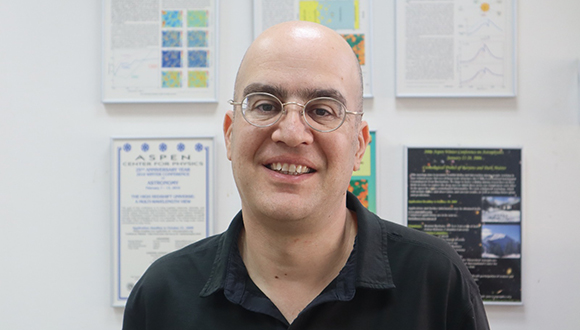A new research study from Tel Aviv University has predicted for the first time the groundbreaking results that can be obtained from a lunar-based detection of radio waves. The study’s findings show that the measured radio signals can be used for a novel test of the standard cosmological model, and to determine the composition of the Universe as well as the weight of neutrino particles, and possibly help scientists gain another clue to the mystery of dark matter.
This study was led by Prof. Rennan Barkana’s research group, from Tel Aviv University’s Sackler School of Physics and Astronomy at Raymond & Beverly Sackler Faculty of Exact Sciences, including the postdoctoral fellow Dr. Rajesh Mondal. Their novel conclusions have been published in the prestigious journal Nature Astronomy.
The researchers note that the cosmic dark ages (the period just before the formation of the first stars) can be studied by detecting radio waves that were emitted from the hydrogen gas that filled the Universe at that time. While every car has an antenna that can detect radio waves, the specific waves from the early Universe are blocked by the Earth’s atmosphere. They can only be studied from space, particularly the moon, which offers a stable environment, free of any interference from an atmosphere or from radio communications. Of course, putting a telescope on the moon is no simple matter, but we are witness to an international space race in which many countries are trying to return to the moon with space probes and, eventually, astronauts. Space agencies in the U.S., Europe, China and India are searching for worthy scientific goals for lunar development, and the new research highlights the prospects for detecting radio waves from the cosmic dark ages.
Prof. Barkana explains: “NASA’s new James Webb space telescope discovered recently distant galaxies whose light we receive from the cosmic dawn, around 300 million years after the Big Bang. Our new research studies an even earlier and more mysterious era: the cosmic dark ages, only 50 million years after the Big Bang. Conditions in the early Universe were quite different from today. The new study combines current knowledge of cosmic history with various options for radio observations, in order to reveal what can be discovered. Specifically, we computed the intensity of radio waves as determined by the density and temperature of the hydrogen gas at various times, and then showed how the signals can be analyzed in order to extract from them the desired results.”
The researchers assess that the findings may be very significant for the scientific understanding of our cosmic history, so that with a single lunar antenna, the standard model of cosmology can be tested to see if it can explain the cosmic dark ages or if instead there was, for example, an unexpected disturbance in the expansion of the Universe that would point towards a new discovery. Furthermore, with a radio telescope consisting of an array of radio antennas, the composition of the Universe (specifically, the amount of hydrogen and of helium within it) can be accurately determined. Hydrogen is the original form of ordinary matter in the Universe, from which formed the stars, planets, and eventually we ourselves. A precise determination of the amount of Helium is also of great importance as it would probe the ancient period, around a minute after the Big Bang, in which Helium formed when the entire Universe was essentially a giant nuclear reactor. With an even larger array of lunar antennas, it will also be possible to measure the weight of cosmic neutrinos. These are tiny particles that are emitted in various nuclear reactions; their weight is a critical unknown parameter in developing physics beyond the established standard model of particle physics.
Prof. Barkana concludes: “When scientists open a new observational window, surprising discoveries usually result. With lunar observations, it may be possible to discover various properties of dark matter, the mysterious substance that we know constitutes most of the matter in the Universe, yet we do not know much about its nature and properties. Clearly, the cosmic dark ages are destined to shed new light on the Universe.”

Prof. Rennan Barkana from TAU’s Sackler School of Physics and Astronomy